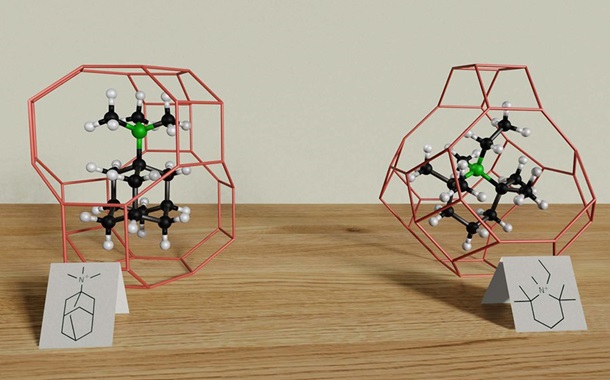The Dynamic Capability, Innovation, Competitive Advantage, and Survival of Tech Startups
Downloads
Doi:10.28991/HIJ-2024-05-04-08
Full Text:PDF
Downloads
Dovleac, R., Ionica, A., & Leba, M. (2020). QFD embedded Agile approach on IT startups project management. Cogent Business and Management, 7(1), 1782658. doi:10.1080/23311975.2020.1782658.
Lestari, S., & Mutmainah, S. (2023). Does narcissism moderate training on performance among millennial and gen z accountants at startups? Cogent Business and Management, 10(3), 2275383. doi:10.1080/23311975.2023.2275383.
Wang, H., & Fang, C. C. (2022). The influence of corporate networks on competitive advantage: the mediating effect of ambidextrous innovation. Technology Analysis and Strategic Management, 34(8), 946–960. doi:10.1080/09537325.2021.1934436.
Sijabat, E. A. S., Nimran, U., Utami, H. N., & Prasetya, A. (2020). Ambidextrous Innovation in Mediating Entrepreneurial Creativity on Firm Performance and Competitive Advantage. Journal of Asian Finance, Economics and Business, 7(11), 737–746. doi:10.13106/jafeb.2020.vol7.no11.737.
Teece, D. J., Pisano, G., & Shuen, A. (2009). Dynamic capabilities and strategic management. Knowledge and Strategy, 18(7), 77–116. doi:10.4337/9781035334995.00014.
Chukwuemeka, O. W., & Onuoha, B. C. (2018). Dynamic Capabilities and Competitive Advantage of Fast Foods Restaurants. International Journal of Management Science and Business Administration, 4(3), 7–14. doi:10.18775/ijmsba.1849-5664-5419.2014.43.1001.
Kuo, S. Y., Lin, P. C., & Lu, C. S. (2017). The effects of dynamic capabilities, service capabilities, competitive advantage, and organizational performance in container shipping. Transportation Research Part A: Policy and Practice, 95, 356–371. doi:10.1016/j.tra.2016.11.015.
Teece, D. J. (2007). Explicating dynamic capabilities: The nature and microfoundations of (sustainable) enterprise performance. Strategic Management Journal, 28(13), 1319–1350. doi:10.1002/smj.640.
Rakangthong, N. K., Hareebin, Y., Dowpiset, K., Jutidharabongse, J., & Aujirapongpan, S. (2023). Exploring Managers' Skills Affecting Dynamic-Innovative Capabilities and Performance in New Normal Era. HighTech and Innovation Journal, 4(1), 37–54. doi:10.28991/HIJ-2023-04-01-03.
Adam, N. A., & Alarifi, G. (2021). Innovation practices for survival of small and medium enterprises (SMEs) in the COVID-19 times: the role of external support. Journal of Innovation and Entrepreneurship, 10(1), 15. doi:10.1186/s13731-021-00156-6.
Lussak, A., Abdurachman, E., Gautama, I., & Setiowati, R. (2020). The influence of financial performance and innovation of services and products on the survival of small businesses in food and beverage in the Jakarta city with mediation of operational improvement. Management Science Letters, 10(2), 463–468. doi:10.5267/j.msl.2019.8.024.
Hasenclever, L., Lopes, R., & Paranhos, J. (2008). Strategic Management of Technological Innovation, by Melissa A. Schiling. Reciis, 2(1), 117–119. doi:10.3395/reciis.v2i1.163en.
Barney, J. (2015). Firm resources and sustained competitive advantage. International Business Strategy: Theory and Practice, 17(1), 283–301. doi:10.1093/oso/9780199277681.003.0003.
Edison, H., Smí¸rsgård, N. M., Wang, X., & Abrahamsson, P. (2018). Lean Internal Startups for Software Product Innovation in Large Companies: Enablers and Inhibitors. Journal of Systems and Software, 135, 69–87. doi:10.1016/j.jss.2017.09.034.
Combs, J. G., Ketchen, D. J., Terjesen, S. A., & Bergh, D. D. (2023). After the startup: A collection to spur research about entrepreneurial growth. Strategic Entrepreneurship Journal, 17(3), 693–709. doi:10.1002/sej.1476.
Schoemaker, P. J. H., Heaton, S., & Teece, D. (2018). Innovation, dynamic capabilities, and leadership. California Management Review, 61(1), 15–42. doi:10.1177/0008125618790246.
Cao, G., Duan, Y., & El Banna, A. (2019). A dynamic capability view of marketing analytics: Evidence from UK firms. Industrial Marketing Management, 76, 72–83. doi:10.1016/j.indmarman.2018.08.002.
Feng, N., Fu, C., Wei, F., Peng, Z., Zhang, Q., & Zhang, K. H. (2019). The key role of dynamic capabilities in the evolutionary process for a startup to develop into an innovation ecosystem leader: An in-depth case study. Journal of Engineering and Technology Management, 54, 81–96. doi:10.1016/j.jengtecman.2019.11.002.
Sijabat, E. A. S., Nimran, U., Utami, H. N., & Prasetya, A. (2021). The Effects of Dynamic Capabilities, Entrepreneurial Creativity and Ambidextrous Innovation on Firm's Competitiveness. Journal of Asian Finance, Economics and Business, 8(1), 711–721. doi:10.13106/jafeb.2021.vol8.no1.711.
Corvello, V., Troise, C., Schiuma, G., & Jones, P. (2024). How start-ups translate learning from innovation failure into strategies for growth. Technovation, 134, 103051. doi:10.1016/j.technovation.2024.103051.
Eurico Soares de Noronha, M., Ferraro, D. M., Longo, L. R., & Melvin, S. S. (2024). The orchestration of dynamic capabilities in cleantech companies. Innovation and Management Review, 21(1), 15–27. doi:10.1108/INMR-08-2021-0144.
Hiroshi Usirono, C., Laureano Paiva, E., & Beal Partyka, R. (2024). Resources and dynamic capabilities in startups. Benchmarking. doi:10.1108/BIJ-12-2023-0857.
Kartika, F. (2024). The Role of Innovation in Startup Success: A Comprehensive Review. Advances: Jurnal Ekonomi & Bisnis, 2(1), 46–58. doi:10.60079/ajeb.v2i1.240.
Rao, A., & Brown, M. A Review of the Resource-Based View (RBV) in Strategic Marketing: Leveraging Firm Resources for Competitive Advantage. Business, Marketing, and Finance Open, 1(3), 25–35.
Wenjie Sun, Kecun Chen, & Jianhua Mei. (2024). Integrating the Resource-Based View and Dynamic Capabilities: a Comprehensive Framework for Sustaining Competitive Advantage in Dynamic Markets. EPRA International Journal of Economic and Business Review, 12(9), 1–8. doi:10.36713/epra18157.
Ferraris, A., Santoro, G., & Luca, S. (2017). How MNC's subsidiaries may improve their innovative performance? The role of external sources and knowledge management capabilities. Journal of Knowledge Management, 21(3), 540–552. doi:10.1108/JKM-09-2016-0411.
Papa, A., Dezi, L., Gregori, G. L., Mueller, J., & Miglietta, N. (2020). Improving innovation performance through knowledge acquisition: the moderating role of employee retention and human resource management practices. Journal of Knowledge Management, 24(3), 589–605. doi:10.1108/JKM-09-2017-0391.
Teece, D. J. (2014). A dynamic capabilities-based entrepreneurial theory of the multinational enterprise. Journal of International Business Studies, 45(1), 8–37. doi:10.1057/jibs.2013.54.
Fainshmidt, S., Pezeshkan, A., Lance Frazier, M., Nair, A., & Markowski, E. (2016). Dynamic Capabilities and Organizational Performance: A Meta-Analytic Evaluation and Extension. Journal of Management Studies, 53(8), 1348–1380. doi:10.1111/joms.12213.
Augier, M., & Teece, D. J. (2009). Dynamic capabilities and the role of managers in business strategy and economic performance. Organization Science, 20(2), 410–421. doi:10.1287/orsc.1090.0424.
Rotjanakorn, A., Sadangharn, P., & Na-Nan, K. (2020). Development of dynamic capabilities for automotive industry performance under disruptive innovation. Journal of Open Innovation: Technology, Market, and Complexity, 6(4), 1–19. doi:10.3390/joitmc6040097.
Schilling, M. A. (2017). Strategic management of technological innovation. McGraw-Hill, New York, United States.
Colombelli, A., Krafft, J., & Vivarelli, M. (2016). To be born is not enough: the key role of innovative start-ups. Small Business Economics, 47(2), 277–291. doi:10.1007/s11187-016-9716-y.
Kijkasiwat, P., & Phuensane, P. (2020). Innovation and Firm Performance: The Moderating and Mediating Roles of Firm Size and Small and Medium Enterprise Finance. Journal of Risk and Financial Management, 13(5), 97. doi:10.3390/jrfm13050097.
Nkundabanyanga, S. K., Mugumya, E., Nalukenge, I., Muhwezi, M., & Najjemba, G. M. (2020). Firm characteristics, innovation, financial resilience and survival of financial institutions. Journal of Accounting in Emerging Economies, 10(1), 48–73. doi:10.1108/JAEE-08-2018-0094.
Crossan, M. M., & Apaydin, M. (2010). A multi-dimensional framework of organizational innovation: A systematic review of the literature. Journal of Management Studies, 47(6), 1154–1191. doi:10.1111/j.1467-6486.2009.00880.x.
Liang, J., & Goetz, S. J. (2018). Technology intensity and agglomeration economies. Research Policy, 47(10), 1990–1995. doi:10.1016/j.respol.2018.07.006.
Theocharis, N., Leligou, H. C., & Tseles, D. (2022). Innovation for People with Disabilities in Hospitality Industry: A Theoretical Approach. HighTech and Innovation Journal, 3(1), 102–114. doi:10.28991/HIJ-2022-03-01-010.
Porter, M. E. (1985). Competitive Advantage of Nations: Creating and Sustaining Superior Performance. Free Press, Washington, D.C., United States.
Gwarda-Gruszczyńska, E. (2023). Intellectual property protection in startups. Kwartalnik Nauk o Przedsič™biorstwie, 67(1), 39–50. doi:10.33119/knop.2023.67.1.3.
Josefy, M. A., Harrison, J. S., Sirmon, D. G., & Matz Carnes, C. (2017). Living and dying: Synthesizing the literature on firm survival and failure across stages of development. Academy of Management Annals, 11(2), 770–799. doi:10.5465/annals.2015.0148.
Carmona-Lavado, A., Cuevas-Rodríguez, G., & Cabello-Medina, C. (2010). Social and organizational capital: Building the context for innovation. Industrial Marketing Management, 39(4), 681–690. doi:10.1016/j.indmarman.2009.09.003.
Gieure, C., & Berbegal-Mirabent, J. (2016). Firm survival strategies for entrepreneurs and freelancers in the translator and interpreter sector. En CARMA 2016: 1st International Conference on Advanced Research Methods in Analytics. Editorial Universitat Politècnica de València, 128–136. doi:10.4995/carma2016.2016.3636.
Mappigau, P., & M, A. (2013). Human Capital and Survival of Small Scale Food Processing Firms under Economic Crisis in Central Java Indonesia. Australian Journal of Business and Management Research, 03(01), 16–29. doi:10.52283/nswrca.ajbmr.20130301a03.
Ahmad, S., Omar, R., & Quoquab, F. (2021). Family firms' sustainable longevity: the role of family involvement in business and innovation capability. Journal of Family Business Management, 11(1), 86–106. doi:10.1108/JFBM-12-2019-0081.
Oppong-Tawiah, D., & Chan, Y. E. (2016). The influence of IT and knowledge capabilities on the survival of university IT startups. International Journal of Technoentrepreneurship, 3(2), 150–172. doi:10.1504/IJTE.2016.080265.
Utomo, H. S. (2020). The Effect of Muslim Religiosity and Innovation Capability on Firm Survival: A Study on Small Enterprises during the Covid-19 Pandemic. Iqtishadia, 13(2), 179. doi:10.21043/iqtishadia.v13i2.7626.
Weaven, S., Quach, S., Thaichon, P., Frazer, L., Billot, K., & Grace, D. (2021). Surviving an economic downturn: Dynamic capabilities of SMEs. Journal of Business Research, 128, 109–123. doi:10.1016/j.jbusres.2021.02.009.
Alvarez Salazar, J. (2021). Organizational resources and survival of startups firms – a qualitative analysis in the Peruvian context. Academia Revista Latinoamericana de Administracion, 34(1), 59–87. doi:10.1108/ARLA-04-2020-0080.
Huang, W., & Ichikohji, T. (2024). How dynamic capabilities enable Chinese SMEs to survive and thrive during COVID-19: Exploring the mediating role of business model innovation. PLoS ONE, 19(5 May), 304471. doi:10.1371/journal.pone.0304471.
Ziemnowicz, C. (2020). Joseph A. Schumpeter and innovation. Encyclopedia of creativity, invention, innovation and entrepreneurship. Springer International Publishing, Cham, Switzerland. doi:10.1007/978-3-319-15347-6_476.
Hyytinen, A., Pajarinen, M., & Rouvinen, P. (2015). Does innovativeness reduce startup survival rates? Journal of Business Venturing, 30(4), 564–581. doi:10.1016/j.jbusvent.2014.10.001.
Crespo, N. F., Crespo, C. F., Silva, G., & Barros, B. (2024). Changing the sails to survive the storm: Strategies that foster international business model innovation during a crisis. Journal of Innovation & Knowledge, 9(4), 100584. doi:10.1016/j.jik.2024.100584.
Ugur, M., & Vivarelli, M. (2021). Innovation, firm survival and productivity: the state of the art. Economics of Innovation and New Technology, 30(5), 433–467. doi:10.1080/10438599.2020.1828509.
Grant, R. M. (1991). The Resource-Based Theory of Competitive Advantage: Implications for Strategy Formulation. California Management Review, 33(3), 114–135. doi:10.2307/41166664.
Ulubeyli, S., Kazaz, A., & Sahin, S. (2018). Survival of construction SMEs in macroeconomic crises: Innovation-based competitive strategies. Journal of Engineering, Design and Technology, 16(4), 654–673. doi:10.1108/JEDT-03-2018-0057.
Almotawteh, M. J. (2020). Impact of Employee Empowerment on Competitive Advantage: Mediating Role of Ethical Leadership. PalArch's Journal of Archaeology of Egypt / Egyptology, 17(7), 16372–16388. doi:10.34218/IJM.12.3.2021.008.
Pereira-Moliner, J., Pertusa-Ortega, E. M., Tarí, J. J., López-Gamero, M. D., & Molina-Azorín, J. F. (2016). Organizational design, quality management and competitive advantage in hotels. International Journal of Contemporary Hospitality Management, 28(4), 762–784. doi:10.1108/IJCHM-10-2014-0545.
Zahra, S. A., & George, G. (2002). Absorptive capacity: A review, reconceptualization, and extension. Academy of Management Review, 27(2), 185–203. doi:10.5465/AMR.2002.6587995.
Naidoo, V. (2010). Firm survival through a crisis: The influence of market orientation, marketing innovation and business strategy. Industrial Marketing Management, 39(8), 1311–1320. doi:10.1016/j.indmarman.2010.02.005.
Correia, R. J., Dias, J. G., & Teixeira, M. S. (2020). Dynamic capabilities and competitive advantages as mediator variables between market orientation and business performance. Journal of Strategy and Management, 14(2), 187–206. doi:10.1108/JSMA-12-2019-0223.
Taghavy, A., Hazari, N., & Hooshmand Chaijani, M. (2024). Assessing the impact of dynamic capabilities, resilience and strategic alignment on startup competitiveness in Iran. Asia-Pacific Journal of Business Administration. doi:10.1108/APJBA-11-2023-0605.
Praditya, R. A., & Purwanto, A. (2024). Linking the Influence of Dynamic Capabilities and Innovation Capabilities on Competitive Advantage: PLS-SEM Analysis. Education Studies and Operations, 1(02), 6–10. doi:10.7777/dzjyxr52.
Wang, C. L., & Ahmed, P. K. (2007). Dynamic capabilities: A review and research agenda. International Journal of Management Reviews, 9(1), 31–51. doi:10.1111/j.1468-2370.2007.00201.x.
Khouroh, U., Sudiro, A., Rahayu, M., & Indrawati, N. K. (2020). The mediating effect of entrepreneurial marketing in the relationship between environmental turbulence and dynamic capability with sustainable competitive advantage: An empirical study in Indonesian MSMEs. Management Science Letters, 10(3), 709–720. doi:10.5267/j.msl.2019.9.007.
Ogunkoya, O., Hassan, B., & Shobayo, P. B. (2020). Dynamic capabilities and competitive advantage: An analysis of the Nigerian banking sector. Journal of Accounting and Management, 4(2), 24–36.
Saputra, M. H., Utomo, M. N., Ariansyah, K., Wismayanti, Y. F., Ansyah, R. H. A., Koeswinarno, & Suradi. (2024). Small and medium-sized enterprises dynamic capabilities and competitive advantage: The mediating effect of digitalization. Entrepreneurial Business and Economics Review, 12(3), 41–67. doi:10.15678/EBER.2024.120303.
Teece, D. J. (2018). Dynamic capabilities as (workable) management systems theory. Journal of Management and Organization, 24(3), 359–368. doi:10.1017/jmo.2017.75.
Schilke, O., Hu, S., & Helfat, C. E. (2018). Quo vadis, dynamic capabilities? A content-analytic review of the current state of knowledge and recommendations for future research. Academy of Management Annals, 12(1), 390–439. doi:10.5465/annals.2016.0014.
Wilden, R., Devinney, T. M., & Dowling, G. R. (2016). The Architecture of Dynamic Capability Research Identifying the Building Blocks of a Configurational Approach. Academy of Management Annals, 10(1), 997–1076. doi:10.1080/19416520.2016.1161966.
Azeem, M., & Khanna, A. (2024). A systematic literature review of startup survival and future research agenda. Journal of Research in Marketing and Entrepreneurship, 26(1), 111–139. doi:10.1108/JRME-03-2022-0040.
Wilden, R., Gudergan, S. P., Nielsen, B. B., & Lings, I. (2013). Dynamic Capabilities and Performance: Strategy, Structure and Environment. Long Range Planning, 46(1–2), 72–96. doi:10.1016/j.lrp.2012.12.001.
Li, S., Ragu-Nathan, B., Ragu-Nathan, T. S., & Subba Rao, S. (2006). The impact of supply chain management practices on competitive advantage and organizational performance. Omega, 34(2), 107–124. doi:10.1016/j.omega.2004.08.002.
Polit, D. F., & Beck, C. T. (2006). The content validity index: Are you sure, you know what's being reported? Critique and recommendations. Research in Nursing and Health, 29(5), 489–497. doi:10.1002/nur.20147.
Hair, J. F., Black, W. C., Babin, B. J., & Anderson, R. E. (2010). Multivariate data analysis. Pearson College Division, London, United Kingdom.
MacCallum, R. C., Widaman, K. F., Zhang, S., & Hong, S. (1999). Sample size in factor analysis. Psychological Methods, 4(1), 84–99. doi:10.1037/1082-989X.4.1.84.
Boomsma, A. (1985). Nonconvergence, improper solutions, and starting values in lisrel maximum likelihood estimation. Psychometrika, 50(2), 229–242. doi:10.1007/BF02294248.
Bentler, P. M., & Chou, C. P. (1987). Practical Issues in Structural Modeling. In Sociological Methods & Research (Vol. 16, Issue 1, pp. 78–117). doi:10.1177/0049124187016001004.
Nunnally, J. C., & Bernstein, I. H. (1978). Psychometric Theory. McGraw-Hills, New York, United States.
Cohen, J. (2013). Statistical Power Analysis for the Behavioral Sciences. Routledge, New York, United States. doi:10.4324/9780203771587 .
Tinsley, H. E. A., & Tinsley, D. J. (1987). Uses of Factor Analysis in Counseling Psychology Research. Journal of Counseling Psychology, 34(4), 414–424. doi:10.1037/0022-0167.34.4.414.
Anderson, J. C., & Gerbing, D. W. (1988). Structural Equation Modeling in Practice: A Review and Recommended Two-Step Approach. Psychological Bulletin, 103(3), 411–423. doi:10.1037/0033-2909.103.3.411.
Ding, L., Velicer, W. F., & Harlow, L. L. (1995). Effects of Estimation Methods, Number of Indicators per Factor, and Improper Solutions on Structural Equation Modeling Fit Indices. Structural Equation Modeling: A Multidisciplinary Journal, 2(2), 119–143. doi:10.1080/10705519509540000.
Tabachnick, B. G., & Fidell, L. S. (2001). Using multivariate statistics. Pearson Education, Boston, United States.
Schumacker, R. E., & Lomax, R. G. (2004). A Beginner's Guide to Structural Equation Modeling. A Beginner's Guide to Structural Equation Modeling. Routledge, New York, United States. doi:10.4324/9781410610904.
Murtagh, F., & Heck, A. (2012). Multivariate data analysis. Springer Science & Business Media, Dordrecht, Germany. doi:10.1007/978-94-009-3789-5.
Hair, J. F., Black, W. C., Babin, B. J., Anderson, R. E., & Tatham, R. L. (2006). Multivariate data analysis. Pearson Prentice Hall, New Jersey, United States.
Podsakoff, P. M., MacKenzie, S. B., Lee, J. Y., & Podsakoff, N. P. (2003). Common Method Biases in Behavioral Research: A Critical Review of the Literature and Recommended Remedies. Journal of Applied Psychology, 88(5), 879–903. doi:10.1037/0021-9010.88.5.879.
Sharma, P., Sivakumaran, B., & Marshall, R. (2011). Deliberate self-indulgence versus involuntary loss of self-control: Toward a robust cross-cultural consumer impulsiveness scale. Journal of International Consumer Marketing, 23(3–4), 229–245. doi:10.1080/08961530.2011.578060.
Chin, W. W., Thatcher, J. B., & Wright, R. T. (2012). Assessing common method bias: Problems with the ULMC technique. MIS Quarterly: Management Information Systems, 36(3), 1003–1019. doi:10.2307/41703491.
George, D., & Mallery, P. (2016). Frequencies. IBM SPSS statistics 23 step by step. Routledge, New York, United States.
Hair, J., Anderson, R., Tatham, R., & Black, W. (1978). Factorial analysis. Techniques and Instrumentation in Analytical Chemistry, 1(C), 219–242. doi:10.1016/S0167-9244(08)70056-8.
Li, D. yuan, & Liu, J. (2014). Dynamic capabilities, environmental dynamism, and competitive advantage: Evidence from China. Journal of Business Research, 67(1), 2793–2799. doi:10.1016/j.jbusres.2012.08.007.
Fainshmidt, S., & Frazier, M. L. (2017). What Facilitates Dynamic Capabilities? The Role of Organizational Climate for Trust. Long Range Planning, 50(5), 550–566. doi:10.1016/j.lrp.2016.05.005.
Teece, D. J. (2012). Dynamic Capabilities: Routines versus Entrepreneurial Action. Journal of Management Studies, 49(8), 1395–1401. doi:10.1111/j.1467-6486.2012.01080.x.
Ortiz-Villajos, J. M., & Sotoca, S. (2018). Innovation and business survival: A long-term approach. Research Policy, 47(8), 1418–1436. doi:10.1016/j.respol.2018.04.019.
Zhang, D., Zheng, W., & Ning, L. (2018). Does innovation facilitate firm survival? Evidence from Chinese high-tech firms. Economic Modelling, 75, 458–468. doi:10.1016/j.econmod.2018.07.030.
Afraz, M. F., Bhatti, S. H., Ferraris, A., & Couturier, J. (2021). The impact of supply chain innovation on competitive advantage in the construction industry: Evidence from a moderated multi-mediation model. Technological Forecasting and Social Change, 162, 120370. doi:10.1016/j.techfore.2020.120370.
Farida, I., & Setiawan, D. (2022). Business Strategies and Competitive Advantage: The Role of Performance and Innovation. Journal of Open Innovation: Technology, Market, and Complexity, 8(3), 163. doi:10.3390/joitmc8030163.
Suoniemi, S., Meyer-Waarden, L., Munzel, A., Zablah, A. R., & Straub, D. (2020). Big data and firm performance: The roles of market-directed capabilities and business strategy. Information and Management, 57(7), 103365. doi:10.1016/j.im.2020.103365.
Ciampi, F., Marzi, G., Demi, S., & Faraoni, M. (2020). The big data-business strategy interconnection: a grand challenge for knowledge management. A review and future perspectives. Journal of Knowledge Management, 24(5), 1157–1176. doi:10.1108/JKM-02-2020-0156.
Nimsith, S. I., Rifas, A. H., & Cader, M. J. A. (2016). Impact of core competency on competitive advantage of banking firms in Sri Lanka. International Journal of Scientific Research and Innovative Technology, 3(7), 64-72.
- This work (including HTML and PDF Files) is licensed under a Creative Commons Attribution 4.0 International License.





















